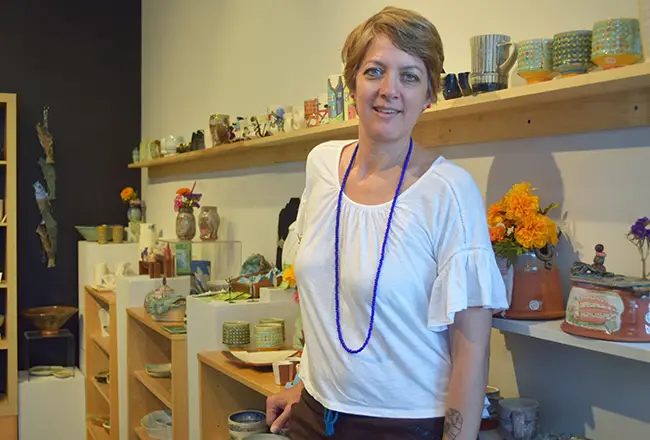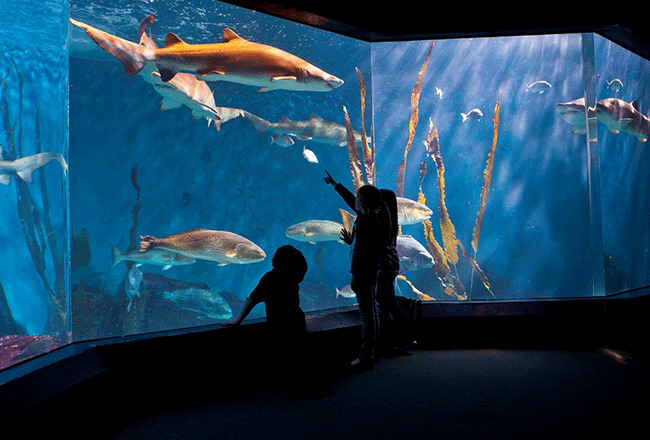
A notice to all train-traveling museum enthusiasts: a group of 11 lower Hudson Valley museums, gardens and historical sites have teamed up to help promote a potential self-guided visitors trail through the region.
The museums stretch from the Edward Hopper House in Nyack to the Wave Hill public gardens and cultural center in the Bronx. Each is either near a Metro-North train stop or connected to the train line through another form of public transit.
The alliance”™s recently launched Explore the lower Hudson Valley website pitches an “upstate experience close to home.” The website extols the Hudson River as a common thread for all the museums.
The river “flows past the cliffs of the Palisades, rock formations older than the Grand Canyon and the gateway to the lower Hudson Valley. Grand estates, the former homes of some of the area”™s most notable residents and philanthropists, welcome visitors to experience tranquil and vibrant gardens, recreational activities, architectural landmarks and grand vistas that hearken back to another era.”
Explore The Hudson Valley represents a promotional alliance among the historical homes, along with a group of natural and cultural sites in the region.
Martha Gellens, assistant director of marketing for Wave Hill, said the alliance came about through working relationships already established through several of the museums.
“Kind of organically, there was a growing recognition that we all share something fundamental and important, being located where we are,” Gellens said. “Virtually all these sites are accessible via Metro-North, which is also important. It means you don”™t necessarily need to have a car to explore the lower Hudson.”
The alliance launched the website this month, which provides brief descriptions of all 11 museums. The website links to the I Love NY Path Through History website, a state database of museums and historical sites that allows planning-minded travelers to build digital itineraries. Travelers can use Explore the Lower Hudson Valley”™s list to chart a course on the state website. They can also add in other museums and stops from the state site.
It”™s a concept similar to the food, wine and beer trails popular throughout the state. By promoting each stop as part of a package, the museums and historic sites can entice tourists and day-trippers looking for a fresh way to explore the region.
Gellens said the Explore The Lower Hudson Valley focus is “probably a little more diffuse than a wine trail would suggest. Some people are interested in relaxation, some have a serious historical interest, some are interested in the conservation aspect of it. I think the Path Through History connection makes it possible to explore in a lot of different ways.”
The museums in the alliance include:
Ӣ Edward Hopper House Museum & Study Center: The Nyack childhood home of the famed American realist painter Edward Hopper;
Ӣ Hudson River Museum in Yonkers;
Ӣ Kykuit, the Rockefeller estate at Sleepy Hollow;
Ӣ Lyndhurst, the Gothic revival mansion in Tarrytown;
Ӣ The Old Croton Aqueduct Trail, the 26-mile trail from Cortlandt to Yonkers, which includes the KeeperӪs House Visitor Center and Museum in Dobbs Ferry;
Ӣ Palisades Interstate Park;
Ӣ Philipsburg Manor, a historic site in Sleepy Hollow;
Ӣ Philipse Manor Hall State Historic Site in Yonkers;
Ӣ Washington IrvingӪs Sunnyside in Irvington;
Ӣ Untermyer Gardens Conservancy, a 43-acre site in Yonkers that has undergone a full restoration; and
Ӣ Wave Hill.
Gellens said many of the organizations already have natural programming connections. Wave Hill, for instance, has run programming with the Hudson River Museum that included a shuttle between the two sites, the Wave Hill curator speaking at the Hudson River Museum and the museum”™s curator speaking at Wave Hill. Wave Hill has also been working on a joint-tour program with Untermyer Gardens.
“I think there”™s a growing recognition among all of us that we reflect the very vibrant presence of art and conservation in the lower Hudson Valley,” Gellens said. “And we wanted to share that perspective with local visitors, along with those coming in from elsewhere.”



















